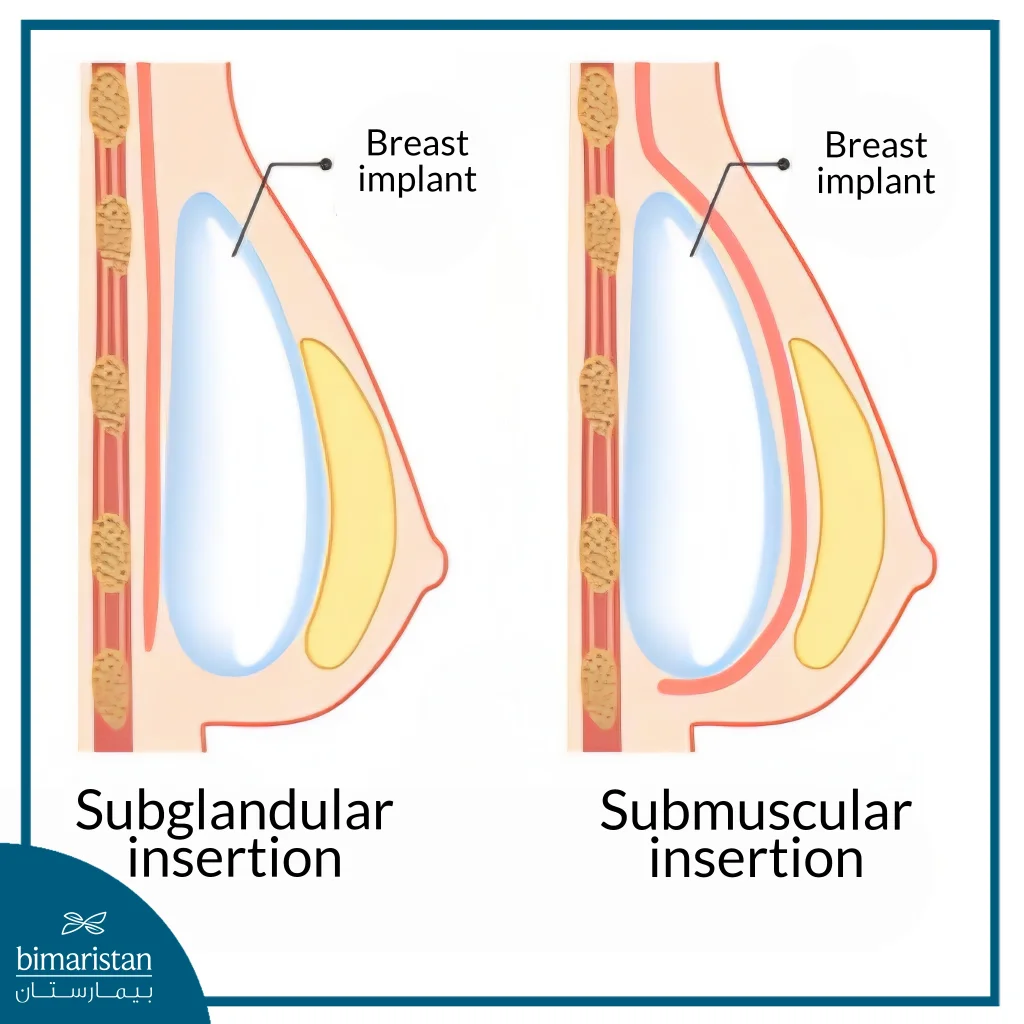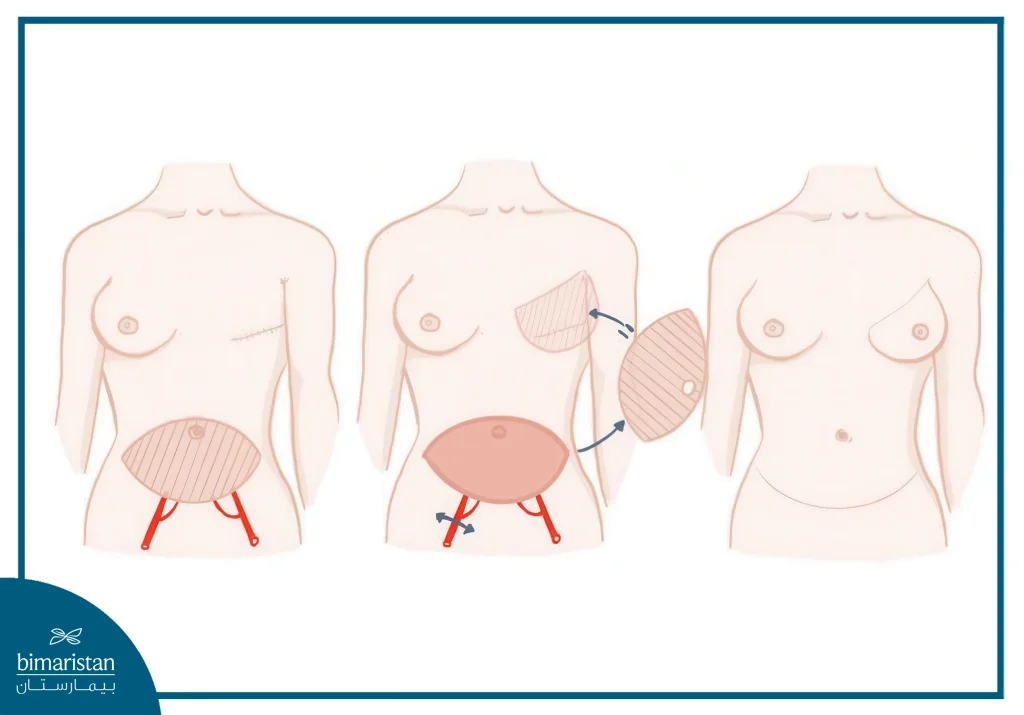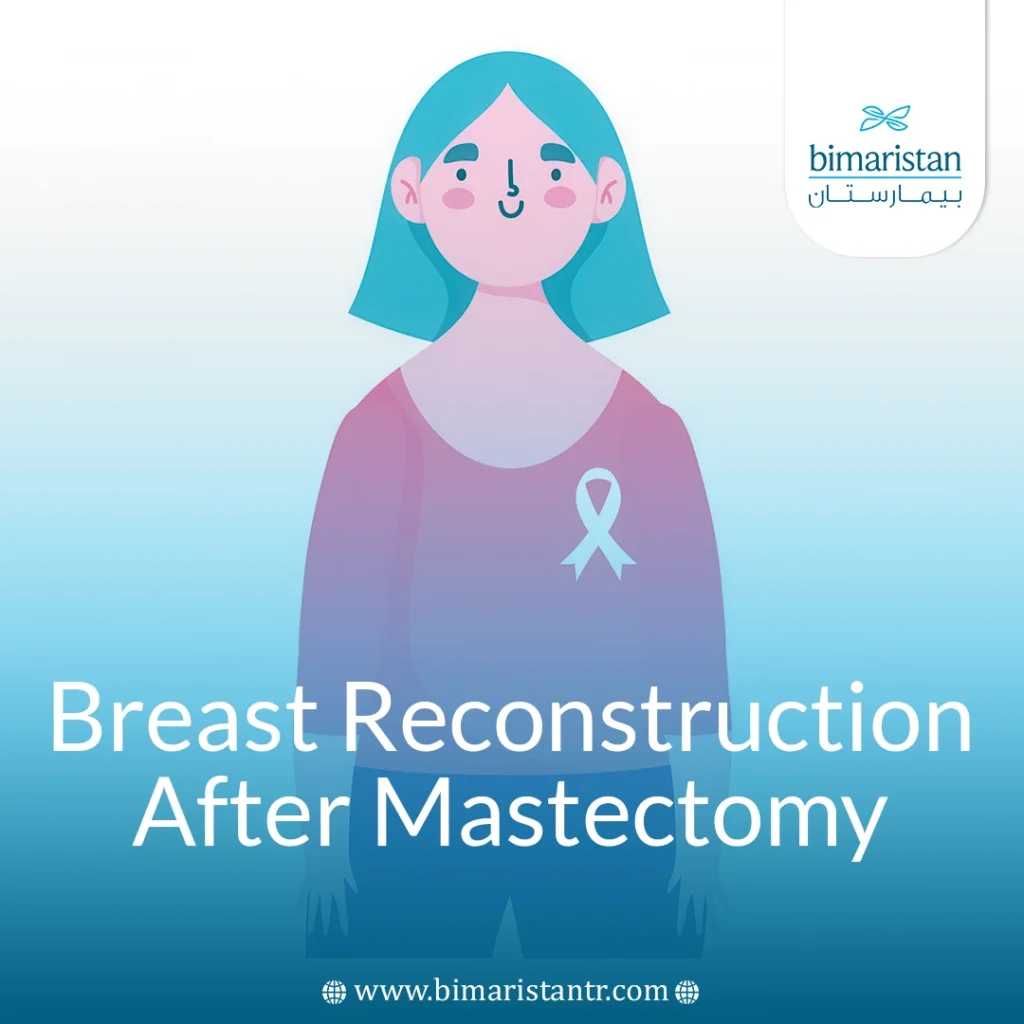After mastectomy for cancer or preventive reasons, many women consider breast reconstruction as a step to regain their natural shape and self-confidence. In this article, we review everything you need to know about the techniques and results of breast reconstruction after mastectomy.
What is breast reconstruction after mastectomy?
Breast reconstruction after mastectomy is a type of breast surgery that aims to reshape the breasts after a complete mastectomy or partial mastectomy (tumor removal only) sometimes, and the reconstruction process may require several surgeries, and there are many breast reconstruction techniques, some of which use breast implants made of silicone or saline while others use a flap of body tissue (such as tissue taken from the muscles of the lower abdomen).
Breast reconstruction may be performed immediately after breast cancer surgery (immediate reconstruction), or months or even years after surgery (delayed reconstruction). Surgery may be performed to reconstruct both breasts, or only one breast may be reshaped to match the other, and your doctor may recommend multiple surgeries at different stages.
Who can do breast reconstruction after mastectomy?
Most women can undergo breast reconstruction immediately after mastectomy with the same procedure, but the patient must be free of infection and severe surgical complications, and have a good general health condition that allows them to tolerate the surgery, as for patients with unstable chronic health issues such as severe cardiac or respiratory diseases, heavy smokers or those with infection in the wound area, this procedure is not recommended, and cancer patients who require intensive radiation therapy, their breast reconstruction may be delayed, and their breast reconstruction may be delayed.
Types of breast reconstruction after mastectomy
There are several types of breast reconstruction after mastectomy, including those that use silicone implants or internal tissues.
Breast reconstruction with implants (silicone or saline)
In breast reconstruction with implants, surgeons use implants made of silicone or saline to reshape the breast, and sometimes the doctor uses a combination of implants and body tissue. And this type of reconstruction can be done with or after a mastectomy, and the types of breast reconstruction with implants include:
- Under the chest muscle: The surgeon lifts the chest muscle and places the implant underneath it.
- Over the chest muscle: In this type, the surgeon places the implant over the pectoral muscle, which minimizes recovery time because the muscle remains in place.
- Implant with tissue expander: The surgeon places an expander under the skin, gradually filling it with saline to expand the skin, and then implants the implant once the skin is sufficiently expanded.

Breast reconstruction using autologous tissue (muscle grafts)
In autologous tissue breast reconstruction, the surgeon takes tissue from the patient’s body and uses it to shape the breast. The tissue is usually taken from the lower abdomen, but may also come from the thigh, back, or buttocks. The surgeon may remove fat, skin, blood vessels, and muscle from these areas to form a new breast. Types of autologous tissue (grafts) include:
- DIEP flap: The doctor takes skin, fat, and blood vessels from the lower abdomen without removing the abdominal muscles.
- TRAM flap: It takes skin, fat, blood vessels, and muscle from the lower abdomen.
- Latissimus dorsi (LD) flap: The doctor removes tissue and muscle from the back and transfers it to the breast area while maintaining the blood supply.
- IGAP flap: The tissue is taken from the buttocks without the muscle.
- SGAP strain: Similar to IGAP but utilizes a different set of blood vessels.
- PAP flap: Tissue is removed from the inside and back of the thigh without muscle.
- TUG flap: Similar to the PAP flap, but in addition to tissue, it also transports muscle.

Breast reconstruction with or without nipple preservation
In some cases, the nipple and areola are removed in mastectomy surgery. They may be left if the tumor has not spread to it. Doctors can recreate a new nipple by transferring skin from another part of the patient’s body or using the skin of the breast itself to shape it into a nipple. Some patients choose to get a 3D tattoo of the areola after reconstructing the nipple.
Immediate or delayed rebuilding?
Most women who opt for breast reconstruction after mastectomy have it done at the same time as the initial surgery, known as immediate reconstruction, but breast reconstruction can be delayed for multiple reasons, such as:
- The necessity of radiation therapy after resection, as it may negatively affect the cosmetic results of some types of reconstruction, especially implants, while reconstruction using the patient’s own tissues shows better results.
- Having an urgent need for chemotherapy
- Factors such as smoking, diabetes, and obesity increase the risk of infection and delayed wound healing, and reconstruction may be delayed until these risks are reduced.
- Some women may prefer to have the cancer removed and treated first before making any decision about reconstruction.
Preparation before breast reconstruction
The doctor will conduct a comprehensive health assessment, and will photograph and measure the breasts. The patient must tell the doctor about the health status and medications the patient is taking, in addition to any previous surgery the patient has undergone, and the doctor will discuss with the patient about treatment options and choose the appropriate type of operation. The patient must be provided with psychological support and be mentally prepared before the surgery.
Recovery period after breast reconstruction
The patient may need to stay in the hospital for up to a week, and the patient may be asked to wear a surgical bra, which helps support the breasts and reduce swelling during recovery, and it is normal for the patient to feel some pain and discomfort after breast reconstruction after mastectomy, and swelling or bruising is common, and the symptoms will gradually subside during the weeks following surgery, and the patient needs 6 to 8 weeks for full recovery and the ability to return to work and normal life.
Expected and cosmetic results of breast reconstruction after mastectomy
Breast cancer and surgery can affect body image, leading to loss of self-confidence and difficulties in relationships, so patients hope for satisfactory cosmetic results, and breast reconstruction after mastectomy is characterized by a high satisfaction rate of up to 90% of patients.
The breast after reconstruction will not feel and look exactly the same as the natural breast. The patient may need some time to adjust to the changes in her body and to feel comfortable. The patient may need additional operations in some cases, in order to improve the symmetry between the two breasts, if only one breast is reconstructed, the patient may need to lift, enlarge or reduce the other breast, and the patient may undergo an additional operation to reconstruct the nipple and areola or in case there are complications and need to replace or modify the implants.
Risks and potential complications of breast reconstruction after mastectomy
Any surgical procedure is not without some complications and risks, and the risks of breast reconstruction after mastectomy include the following:
- Blood clots: These are more likely after a muscle graft transplant.
- Implant failure: Such as curling, rippling, or rupture of the implant.
- Infection: As with any other surgical procedure, infection is a potential risk and is treated with antibiotics.
- Fluid collection: Fluid may collect after the incision, even after the drainage tubes are removed, days after the procedure.
- Numbness and numbness: Patients may experience numbness, tingling or tingling as a result of nerve damage, which may last up to 12 months after surgery in some cases.
- Wound healing issues as well as anesthesia risks
- Bruising or scarring around the reconstructed breast.
Psychosocial support after breast reconstruction is essential to the patient’s recovery, and helps in improving self-image and enhancing self-confidence, especially with the physical changes after surgery, as support groups provide an environment to understand the experience and share feelings with women who have gone through the same circumstances, which reduces the feeling of isolation, as for the role of family and partner is pivotal, as emotional support and understanding contribute to reducing anxiety and promoting adaptation, especially in the marital and intimate relationship.
In conclusion, breast reconstruction after mastectomy gives women a chance to regain their body shape and self-confidence after a difficult treatment experience. Thanks to medical advances, many options are available today that suit each case, and the decision remains a joint one between the patient and the doctor.
Sources:
- National Cancer Institute. (n.d.). Breast reconstruction after mastectomy and lumpectomy . U.S. Department of Health and Human Services
- British Association of Plastic, Reconstructive and Aesthetic Surgeons.(n.d.). Oncoplastic guidelines for healthcare professionals
- Ramakrishnan, V., & McNamara, A. (2017). Patient-reported outcomes following breast reconstruction: A review of the literature. Journal of Plastic Surgery, PMC5722225.

